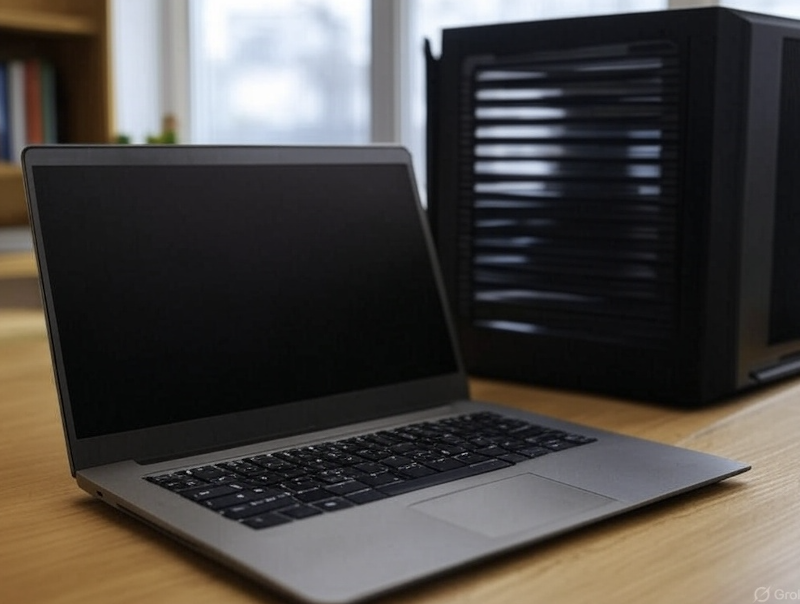Choosing the right computer for your small business is a crucial decision that affects productivity, efficiency, and overall business operations. Whether you need a desktop PC or a laptop, several key factors should guide your selection to ensure you get the best value for your investment.

1. Define Your Business Needs
Before purchasing a computer, assess your business requirements:
- Basic Office Work – Email, document editing, web browsing.
- Multitasking & Productivity – Running multiple applications simultaneously.
- Specialized Software – Graphic design, video editing, or engineering tools.
- Portability – If you need to work remotely or travel frequently, a laptop is preferable.
- Security & Reliability – Important for protecting business data.
2. Desktop vs. Laptop: Which One to Choose?
- Desktop PCs – More powerful, upgradeable, and cost-effective. Ideal for stationary office setups.
- Laptops – Offer portability, battery backup, and flexibility but may have limited upgradeability.
3. Key Specifications to Consider
Processor (CPU)
- Intel Core i5/i7 or AMD Ryzen 5/7 – Ideal for most business applications.
- Intel Core i3 or Ryzen 3 – Suitable for basic office work.
- Intel Core i9 or Ryzen 9 – Needed for high-performance tasks like video editing.
Memory (RAM)
- 8GB RAM – Minimum for smooth multitasking.
- 16GB RAM – Recommended for businesses running multiple applications.
- 32GB RAM or more – Ideal for demanding tasks like data analysis or design.
Storage (SSD vs. HDD)
- SSD (Solid State Drive) – Faster boot times and application loading.
- HDD (Hard Disk Drive) – More storage for a lower price but slower performance.
- Recommended: 256GB or 512GB SSD for performance, with an additional HDD for storage if needed.
Graphics Card (GPU)
- Integrated Graphics (Intel UHD, AMD Radeon Vega) – Sufficient for general office work.
- Dedicated GPU (NVIDIA GTX/RTX, AMD Radeon Pro) – Required for design, video editing, and gaming.
4. Operating System: Windows vs. macOS vs. Linux
- Windows – Best for general business use, compatibility with most software.
- macOS – Preferred by creative professionals (design, video editing).
- Linux – Secure and cost-effective but requires technical expertise.
5. Battery Life (For Laptops)
- Look for at least 8-10 hours of battery life for uninterrupted work.
- Consider fast-charging options if you’re frequently on the move.
6. Connectivity & Ports
- USB-C / USB 3.0 – For faster data transfer and peripheral connections.
- HDMI/DisplayPort – Needed for external monitors.
- Wi-Fi 6 & Ethernet – Ensure reliable internet connectivity.
7. Security Features
- Fingerprint scanner & TPM (Trusted Platform Module) – Enhance data security.
- Encryption & Backup Solutions – Protect sensitive business data.
- Built-in Webcam & Privacy Shutter – Important for remote meetings.
8. Budget Considerations
- Entry-level ($500-$800) – Suitable for basic office tasks.
- Mid-range ($800-$1500) – Good for multitasking and moderate workloads.
- High-end ($1500-$3000+) – Necessary for specialized software and high-performance needs.
9. Brand & Warranty
- Choose reliable brands like Dell, HP, Lenovo, Apple, or ASUS.
- Look for warranties covering at least 1-3 years with on-site support options.
10. Future-Proofing Your Investment
- Opt for upgradeable RAM and storage.
- Ensure compatibility with future software updates.
- Choose a system with good manufacturer support and extended warranty options.
Conclusion
Selecting the right PC or laptop for your small business depends on your specific needs, budget, and growth expectations. Investing in the right device will boost productivity and ensure long-term reliability for your operations.